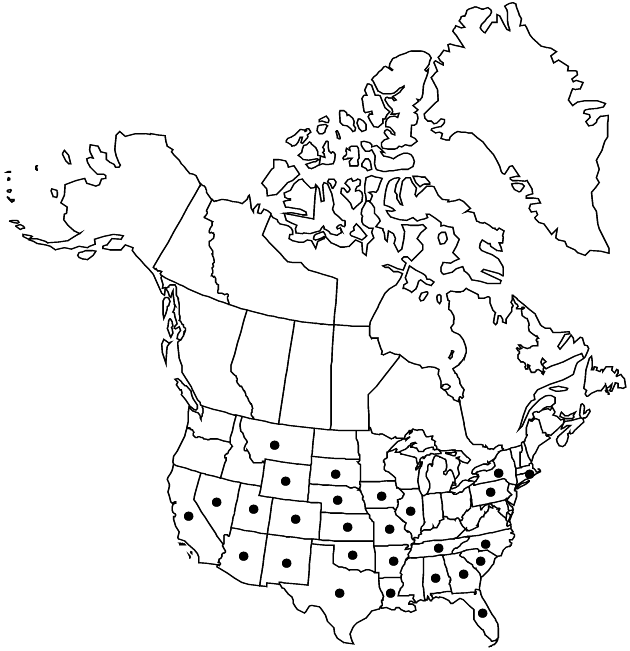Verbesina encelioides
in W. H. Brewer et al., Bot. California 1: 350. 1876.
Plants 10–50 (–120+) cm (annuals, internodes not winged). Leaves all or mostly alternate (proximal usually opposite); blades deltate-ovate or rhombic to lanceolate, 3–8 (–12+) × 2–4 (–6+) cm, bases broadly cuneate to ± truncate, margins coarsely toothed to subentire, apices acute to attenuate, faces strigoso-scabrellous to sericeous. Heads usually borne singly, sometimes 2–3+ in loose, cymiform or corymbiform arrays. Involucres ± hemispheric to saucerlike, 10–20+ mm diam. Phyllaries 12–18+ in 1–2 series, ± erect to spreading, lanceovate or lance-linear to linear, 6–8+ mm. Ray-florets (8–) 12–15+; laminae 8–10 (–20+) mm. Disc-florets 80–150+; corollas yellow. Cypselae dark-brown to blackish, narrowly obovate, 3.5–5+ mm, faces ± strigillose; pappi 0.5–1 (–2) mm (0 on ray cypselae). 2n = 34.
Phenology: Flowering Aug–Oct.
Habitat: Swales, disturbed sites
Elevation: 10–2500 m
Distribution

Ala., Ariz., Ark., Calif., Colo., Fla., Ga., Ill., Iowa, Kans., La., Mo., Mont., Nebr., Nev., N.Mex., N.Y., N.C., Okla., Pa., R.I., S.C., S.Dak., Tenn., Tex., Utah, Wyo., Mexico, West Indies, South America, in Asia, Pacific Islands (Hawaii), Australia
Discussion
Native distribution of Verbesina encelioides in the flora area is uncertain. Plants of Verbesina encelioides from ca. 100°W (e.g., c Texas) and eastward usually have auriculate petiole bases and have been called var. encelioides; plants from the west usually lack auricles and have been called var. exauriculata.
Selected References
None.
Lower Taxa
"broader" is not a number.
